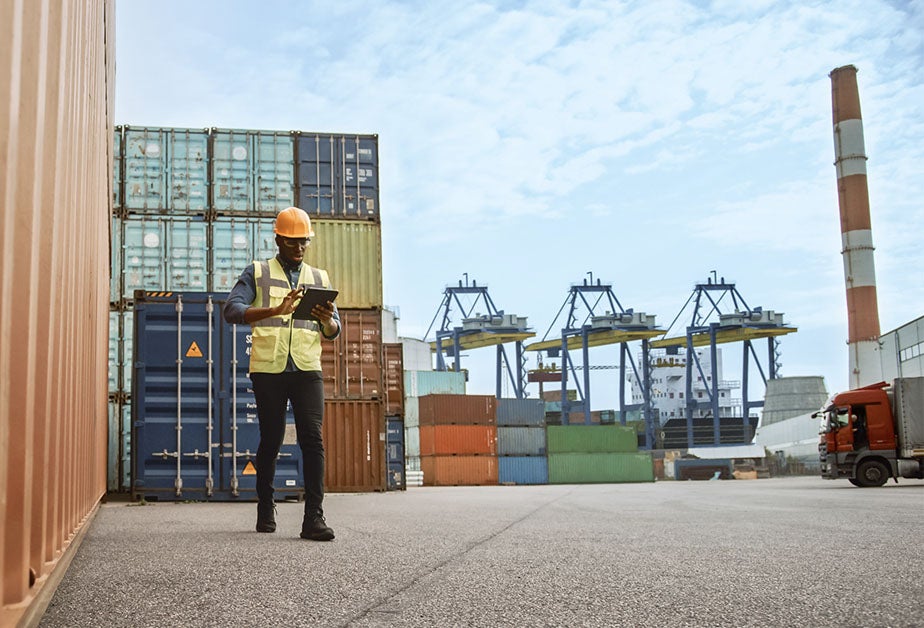The Customs Trade Partnership Against Terrorism (CTPAT) is a program that serves to strengthen the international supply chain while improving border security in the U.S, and it’s proven to be a success.
In August 2022, the U.S. Customs and Border Protection (CBP) announced that CTPAT members would face new requirements in relation to forced labor. Meeting these requirements would provide registrants and aspiring members alike with new benefits. However, these requirements will require substantive and proactive action, and current members have until August 2023 to provide evidence that these requirements have been met.
What Is CTPAT? What Benefits Does It Offer Manufacturers?
CTPAT was created in 2001 as a voluntary public-private sector partnership program with the explicit goal of creating a safer international supply chain and strengthening U.S. borders. CTPAT now has 11,500 members, who together account for over 52% (by value) of all cargo imported into the U.S.
Once accepted, a CTPAT partner makes an agreement to work with the CBP to implement security measures and best practices, protect the supply chain, and identify security gaps. Applicants must also address a wide swath of security topics and present security profiles that list action plans to align supply chain security.
CTPAT members also receive numerous benefits as part of their membership, including:
- Shorter wait times at the border
- Front of the line inspections
- Fewer CBP examinations
- An assigned Supply Chain Security Specialist
- Priority consideration at the CBP’s industry-focused Centers of Excellence and Expertise
- Access to the Free and Secure Trade (FAST) lanes at land borders
- Access to the CTPAT web-based portal system and a library of training materials
- Business resumption priority following a natural disaster or terrorist attack
- Importer eligibility to participate in the Importer Self-Assessment Program (ISA)
- Eligibility for other U.S. government pilot programs
- Possibility of enjoying additional benefits by being recognized as a trusted trade partner by foreign Customs administrations that have signed Mutual Recognition with the U.S.
- Possible exemptions from Stratified Exams
New Compliance Requirements
On August 1, 2022, the CBP announced new mandatory minimum security criteria related to forced labor for CTPAT members. Members must have a documented social compliance program in place that, at a minimum, addresses how the company ensures goods imported into the U.S. were not mined, produced, or manufactured, wholly or in part, with prohibited forms of labor (i.e., forced, imprisoned, indentured, or indentured child labor). CTPAT Trade Compliance members must comply with the following six new program requirements:
#1: Risk-Based Mapping
CTPAT partners must conduct risk-based mapping of their business with suppliers that outlines supply chains in their entirety. This must include regions and suppliers that the importer feels pose the most forced labor risk.
Further, importers must determine within their organization what imports are high-risk to their business model. They should take into consideration publicly available information from the CBP, which is provided on its website.
The CBP can request unredacted proof of supply chain mapping about a specific supply chain at any time.
Lastly, the code of conduct should include a commitment to business mapping.
#2: Code of Conduct
CTPAT partners are required to create a code of conduct statement representing their position against the use of forced labor within any part of their supply chain.
This statement must be uploaded to the CTPAT online portal and published publicly. It must also be included in the company’s social compliance program focused on forced labor.
CTPAT members are required to have policies and procedures that operationalize this code of conduct and provide evidence that they have implemented these policies.
#3: Evidence of Implementation
CTPAT partners must provide the CBP with evidence that their social compliance program was implemented. Partners also have to be able to identify the parts of their supply chain that are most at risk as part of that program, and also provide the CBP with this information if it is requested.
Evidence examples include:
- Unredacted audits of high-risk supply chains (related to forced labor)
- Internal training programs for employees about identifying signs of forced labor
- Mechanisms used to show their supply chain is definitively free of forced labor
#4: Due Diligence & Training
Partners are required to provide their suppliers with training about their social compliance program requirements that help identify and prevent forced labor in the supply chain and identifies specific risks. This training should also exemplify the company’s commitment and position against forced labor as it’s stated in their code of conduct.
While training requirements are determined by the partner, they must ensure that the supplier’s business model and code of conduct represent that they will not partner with businesses that use forced labor.
Evidence of this training must be made available to the CBP when requested.
#5: Remediation
Partners are required to maintain remediation plans for their organization in the event that forced labor is identified in their supply chains. These plans must include disclosure processes and outline the steps for employees and suppliers to take to remedy the issue.
This information must be provided to the CBP upon request.
#6: Shared Best Practices
Partners will have to share best practices with the CTPAT Trade Compliance Program, as needed, to help mitigate forced labor risk.
New CTPAT Benefits for Meeting Forced Labor Requirements
When CTPAT partners meet these new forced labor requirements, they will enjoy three new benefits.
Front of the Line Admissibility Review: If a partner’s shipment is detained due to forced labor, they will have their admissibility packages prioritized for review by the appropriate Center of Excellence and Expertise. The importer has to assert that it is an active CTPAT Trade Compliance program and request prioritized review when supporting documentation is submitted to the CBP. Once they receive the declaration, the center will prioritize the package’s processing above other non-CTPAT partner packages, to the best of its ability.
Redelivery Hold: If a partner has shipments that arrive at their facility that are later determined to be held because of ties to forced labor, they may hold their shipments intact at their facility instead of redelivering the goods to the CBP. This is allowed until an admissibility determination is made or until a physical inspection is required.
Detained Withhold Release Order (WRO) Shipments Move to Bonded Facility: If a partner’s shipment is detailed by the CBP due to a WRO, they will be allowed to move the goods to a bonded facility, where they will be held intact until the CPB makes an admissibility determination.
Requirements Timeline
After being on hold in 2021, the CBP reopened the CTPAT program to new members in August 2022. Starting August 1, 2022, all companies wishing to join CTPAT must meet these requirements before they will be accepted. Existing CTPAT members must submit proof of compliance with these new requirements by August. 1, 2023. Member companies that are not able to comply with these new requirements are subject to suspension or removal from the program.
Get Deep, Defensible Data With Assent
These new CTPAT requirements are not an individual action; it is representative of a broader regulatory push against forced labor, alongside the Uyghur Forced Labor Prevention Act (UFLPA). With more global legislation on the way, it’s important to act now to ensure compliance with new CTPAT requirements and prepare for new regulations.
A deep view of your supply chain requires defensible data. Assent’s solution deep maps and monitors suppliers, products, practices, and regulations, allowing you to retain customers and investors, educate your suppliers, and protect your supply chain continuity.
Contact us if you would like to learn more about how Assent will help you grow better.









